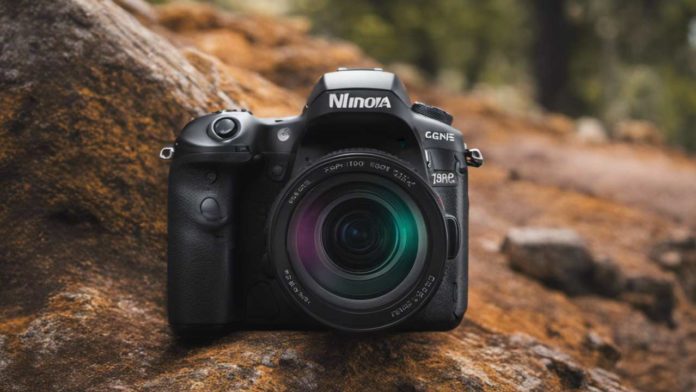What is the Difference Between GFX 100 and 100S?
The GFX series from Fujifilm has gained immense popularity among professional photographers and enthusiasts alike. With its medium format sensor and exceptional image quality, the GFX cameras have become a go-to choice for those seeking the ultimate in image resolution and detail. Two notable models in this series are the GFX 100 and GFX 100S. In this article, we will explore the key differences between these two cameras and help you understand which one may be the right choice for your photography needs.
GFX 100: The Flagship Medium Format Camera
The GFX 100 is the flagship model in Fujifilm’s GFX series. It features a 102-megapixel back-illuminated sensor, which is currently the highest resolution sensor available in the medium format market. This sensor, combined with the X-Processor 4 image processing engine, delivers exceptional image quality with stunning detail and dynamic range.
One of the standout features of the GFX 100 is its in-body image stabilization (IBIS) system. This system provides up to 5.5 stops of image stabilization, allowing photographers to capture sharp images even in challenging lighting conditions or when using slower shutter speeds. The IBIS system is particularly beneficial when shooting handheld or with non-stabilized lenses.
In terms of design, the GFX 100 is a larger and heavier camera compared to its sibling, the GFX 100S. It features a robust magnesium alloy body with weather sealing, making it suitable for use in various environmental conditions. The camera also offers a built-in vertical grip, providing a comfortable and secure grip for extended shooting sessions.
Another notable feature of the GFX 100 is its advanced autofocus system. It utilizes phase detection autofocus (PDAF) with 3.76 million phase detection pixels across the entire sensor. This results in fast and accurate autofocus performance, even when tracking moving subjects.
The GFX 100 also offers 4K video recording capabilities, making it a versatile tool for both photographers and videographers. It supports various video formats, including DCI 4K and UHD 4K, with options for different frame rates and bitrates.
GFX 100S: Compact and Lightweight Medium Format
The GFX 100S is a more compact and lightweight alternative to the GFX 100. It features the same 102-megapixel sensor as its sibling, ensuring exceptional image quality and detail. However, the GFX 100S does not have the in-body image stabilization found in the GFX 100.
Despite its smaller size, the GFX 100S still offers a comfortable grip and intuitive handling. It features a durable magnesium alloy body with weather sealing, providing reliable performance in various shooting conditions. The camera also has a built-in vertical grip, similar to the GFX 100.
One of the key advantages of the GFX 100S is its portability. It weighs approximately 900 grams (1.98 pounds), making it significantly lighter than the GFX 100, which weighs around 1.36 kilograms (2.99 pounds). This makes the GFX 100S a more suitable option for photographers who prioritize mobility and handheld shooting.
In terms of autofocus performance, the GFX 100S utilizes the same phase detection autofocus system as the GFX 100. It offers fast and accurate autofocus, ensuring sharp images even when capturing moving subjects.
Similar to the GFX 100, the GFX 100S also supports 4K video recording. It provides various video formats and settings, allowing videographers to capture high-quality footage with excellent detail and color reproduction.
Comparison Table
| Feature | GFX 100 | GFX 100S |
|---|---|---|
| Resolution | 102 megapixels | 102 megapixels |
| In-Body Image Stabilization | Yes | No |
| Size | Larger and heavier | Compact and lightweight |
| Autofocus | Phase detection autofocus | Phase detection autofocus |
| Video Recording | 4K capabilities | 4K capabilities |
Expert Opinion
Both the GFX 100 and GFX 100S are exceptional cameras that offer outstanding image quality and performance. The choice between the two ultimately depends on your specific needs and preferences.
If you prioritize the highest resolution and require in-body image stabilization, the GFX 100 is the clear choice. Its 102-megapixel sensor and IBIS system make it ideal for capturing incredibly detailed images, especially in challenging shooting conditions.
On the other hand, if portability and lightweight design are important to you, the GFX 100S is a fantastic option. It offers the same image quality as the GFX 100 but in a more compact and lightweight package. This makes it easier to carry around and suitable for handheld shooting.
Ultimately, both cameras deliver exceptional image quality and performance, and you can’t go wrong with either choice. Consider your shooting style, preferences, and budget to determine which camera best suits your needs.
Frequently Asked Questions (FAQs)
1. Can I use the lenses interchangeably between the GFX 100 and GFX 100S?
Yes, both cameras use the same G-mount, allowing you to use the lenses interchangeably.
2. Do the GFX 100 and GFX 100S have weather sealing?
Yes, both cameras feature weather sealing, providing protection against dust and moisture.
3. Can I shoot in low light conditions with the GFX 100 and GFX 100S?
Yes, both cameras have excellent low light performance, thanks to their large sensors and advanced image processing capabilities.
4. Do the GFX 100 and GFX 100S have a tilting LCD screen?
Yes, both cameras have a tilting LCD screen, allowing for easier composition and shooting from various angles.
5. Are there any differences in the image quality between the GFX 100 and GFX 100S?
No, both cameras have the same 102-megapixel sensor, ensuring identical image quality and detail.
Sources:
- Fujifilm Official Website – https://www.fujifilm.com/
- DPReview – https://www.dpreview.com/
- Photography Life – https://photographylife.com/
- Camera Jabber – https://camerajabber.com/
- Fujifilm GFX 100S Review by Imaging Resource – https://www.imaging-resource.com/


